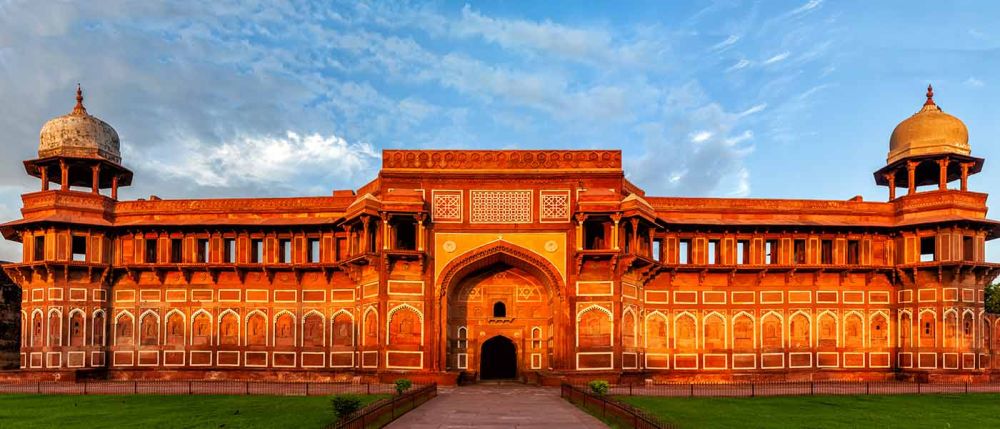

Agra Fort, also known as the "Red Fort of Agra," is an impressive historical edifice located in the city of Agra in Uttar Pradesh, India. It is one of the most significant forts in India and a prominent tourist attraction, widely recognized for its architectural grandeur and historical significance. This UNESCO World Heritage Site is only about 2.5 kilometers away from another majestic monument, the world-renowned Taj Mahal.
The fort's history can be traced back to the 11th century, but the present structure was built by the Mughal Emperor Akbar in the 16th century. Agra was the capital of the Mughal Empire under Akbar, and the fort became a symbol of power, strength, and resilience of the Mughal reign in India.
Through the years, Agra Fort has been the site of many significant historical events. It has witnessed the ascension of various Mughal emperors to the throne and has seen periods of both prosperity and strife. Emperor Shah Jahan, who is known for constructing the Taj Mahal, was imprisoned by his son Aurangzeb in the fort, where he spent his last days gazing upon the Taj Mahal from a distance.
Tourism at Agra Fort has been an integral part of India's tourism industry. As the fort is a symbol of India's rich history, tourists from all over the world flock to Agra to witness its majesty. The fort comprises various palaces, such as Jahangir's Palace and Khas Mahal, along with two beautiful mosques – the Nagina Masjid and Mina Masjid.
Over the years, the Agra Fort has undergone numerous conservation efforts to preserve its structural integrity and heritage. This includes routine maintenance and restoration works needed due to the impact of environmental conditions and the sheer volume of visitors.
The latest tourism trends at Agra Fort, in line with the wider tourism industry, include an increase in the use of digital and audio guides helping visitors to understand the site's history in depth. There is also a growing focus on sustainability and responsible tourism to ensure the site's preservation for future generations.
Virtual tours have become increasingly popular due to the global events such as the COVID-19 pandemic, enabling people to explore this historic monument from the comfort of their home. However, now that travel restrictions are easing, there has been a resurgence in physical visits, with tourists searching for authentic experiences and historical connections.
Furthermore, night tourism has been introduced at the Agra Fort, allowing visitors to admire its beauty under the moonlight, a move which has greatly increased its appeal and the visitor numbers in the evening sessions.
Those interested in visiting Agra Fort are advised to check the official timings and ticket prices, and consider hiring a certified guide to make the most out of their visit. The fort is open to tourists almost every day, with the exception of some public holidays. Visiting in the early morning or late afternoon can provide a more comfortable experience avoiding the midday heat.
In conclusion, Agra Fort's rich history and stunning architecture make it a cornerstone of India's tourism landscape. As one of India's most iconic structures, it continues to attract millions of tourists who leave with a deeper understanding of India's cultural and historical heritage.